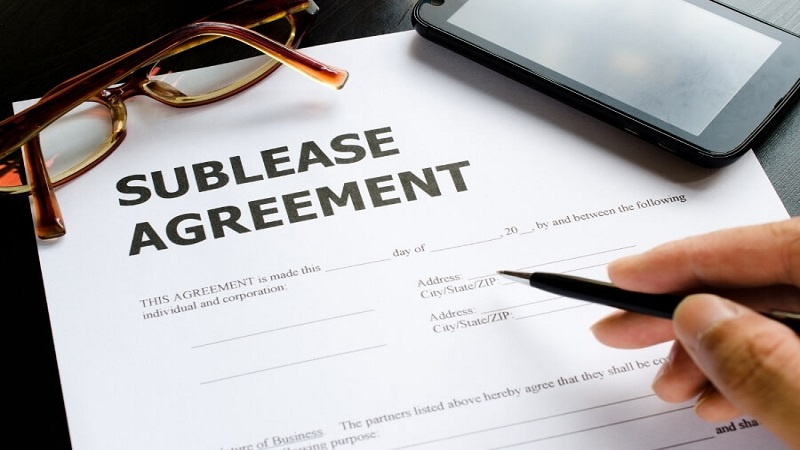Understanding Subleasing
Definition and Concept
Subleasing is a legal arrangement that allows a tenant, known as the sublessor, to rent out all or part of their rented property to another individual, referred to as the sublessee. This practice is common in urban areas where flexibility in housing arrangements is often sought after. Subleasing is established with the consent of the original landlord, and it introduces a secondary lease known as the sublease agreement.
Subleasing offers advantages for both parties involved. For the sublessor, it provides an opportunity to offset rental costs, especially in situations where they might be away for an extended period. On the other hand, the sublessee gains access to housing for a shorter duration, offering flexibility and potentially cost-effective solutions.
Key Parties Involved

In a sublease agreement, three primary parties are involved: the original landlord, the sublessor (the tenant leasing the property), and the sublessee (the individual renting from the tenant). It’s crucial to understand each party’s distinct roles and responsibilities to ensure a smooth subleasing process.
The original landlord typically holds the primary lease agreement with the sublessor. The sublessor then becomes both a tenant and a landlord – responsible for adhering to the original lease terms while managing the sublease arrangement with the sublessee. The sublessee, in turn, is subject to the conditions outlined in both the primary lease and the sublease agreement.
Legal Considerations and Responsibilities
Before engaging in subleasing, it’s essential to be aware of local laws and regulations governing such arrangements. While the sublessor remains responsible for the property under the original lease agreement, the legal responsibilities can be shared or transferred to the sublessee through the sublease agreement. Clarity in outlining these legal considerations is vital to prevent any disputes in the future.
Ensuring that the sublease arrangement aligns with local regulations is crucial for the sublessor and sublessee alike. Legal obligations, such as complying with building codes, zoning laws, and other regulations, must be clearly understood and addressed in the sublease agreement.
Components of a Sublease Agreement
Parties Involved
To create a comprehensive sublease agreement, begin by clearly identifying the sublessor, sublessee, and the original landlord. Include their legal names, addresses, and contact information. This information ensures that all parties are correctly identified and can be contacted if necessary.
In this section, it’s also essential to specify the relationship between the sublessor and the original landlord. Clarify that the sublessor has obtained the necessary consent to sublease the property.
Property Details
Provide detailed information about the property being subleased. Include the complete address, unit number, and any specific details about the property’s condition or limitations. This section aims to eliminate ambiguity and ensure that both parties agree regarding the property being subleased.
Detailed property information should cover the type of dwelling (apartment, house, or condominium), the number of bedrooms and bathrooms, and any included amenities. Additionally, it’s important to outline any restrictions on alterations or modifications to the property.
Terms and Conditions
Clearly outline the terms and conditions of the sublease agreement. This includes the duration of the sublease, the amount of rent, the payment schedule, and any specific rules or restrictions that the sublessee must adhere to during their occupancy. Specificity in this section is crucial for avoiding misunderstandings and disputes later on.
Governing Laws and Regulations
Specify the governing laws and regulations that apply to the sublease agreement. This provides a legal framework for the agreement, ensuring that both parties are aware of their rights and obligations. It’s essential to research and include relevant local laws to strengthen the enforceability of the sublease agreement.
This section should also address any potential conflicts or discrepancies between the sublease agreement and the original lease. Clearly outline how such conflicts will be resolved and whether the terms of the original lease prevail in certain situations.
Creating a Sublease Agreement Template
Introduction to Templates
Consider using a template to simplify the process of crafting a sublease agreement. Templates offer a standardized format, making it easier to ensure all necessary information is included. Online platforms like Lumin provide user-friendly interfaces to efficiently create, edit, and manage sublease agreements.
Template Sections

Header and Title
Begin the sublease agreement with a clear and professional header and title. This sets the tone for a formal document and makes it easily identifiable.
Parties and Property Details
Clearly define the sublessor, sublessee, and property details. Ensure that all relevant contact information is included for easy communication.
Terms and Conditions
Detail the terms of the sublease, including the duration, rent amount, payment schedule, and any specific conditions both parties must adhere to. Consider including clauses regarding maintenance responsibilities, utilities, and any other relevant details.
Governing Laws
Clearly state the applicable local laws and regulations governing the sublease agreement. This adds a layer of legal protection and ensures that both parties are aware of the legal context.
Signatures and Date
Conclude the sublease agreement with spaces for the signatures of both parties and the date of execution. Signatures confirm the parties’ understanding and agreement to abide by the terms outlined in the sublease.
Lumin Sample Sublease Agreement Template
Lumin, as a leading online PDF editor, offers a versatile platform for creating and editing sublease agreements. The platform provides a range of free PDF templates tailored for various purposes, including subleasing. Lumin’s intuitive interface allows users to customize these templates easily, adding specific details relevant to their sublease agreement.
The Lumin Sublease Agreement Template encompasses all the essential sections discussed above. Users can fill in the required information, edit clauses as needed, and generate a professionally formatted sublease agreement. The platform’s features make it convenient for users to create legally sound documents without the need for extensive manual editing.
In conclusion, crafting a comprehensive sublease agreement requires attention to detail and legal considerations. Utilizing a template, especially one provided by online PDF editors like Lumin, can significantly streamline the process. By following the guide and leveraging the tools available, individuals can ensure that their sublease agreements are clear, legally sound, and tailored to their specific needs.
